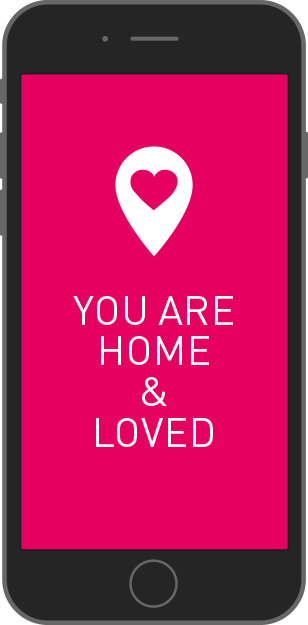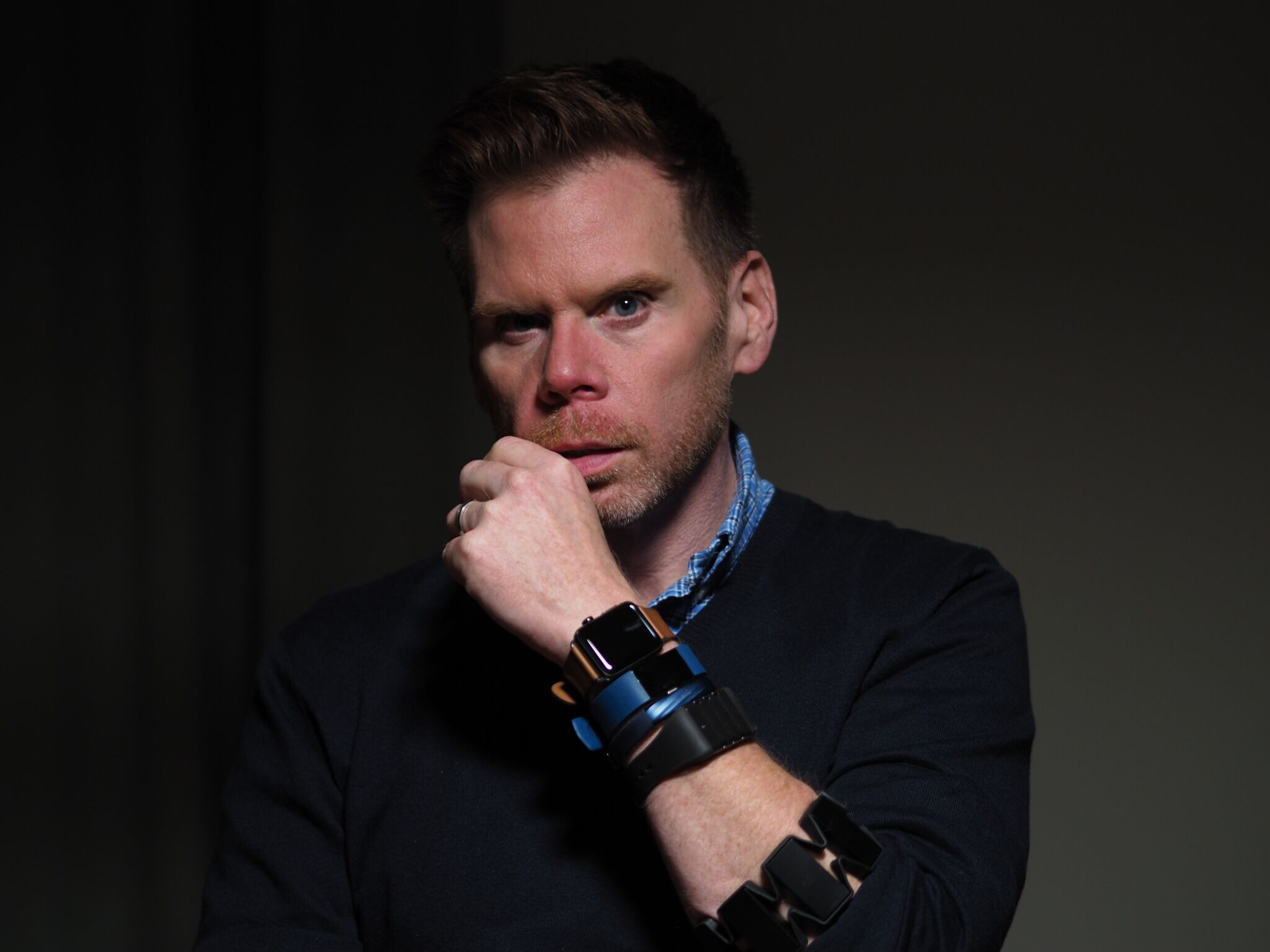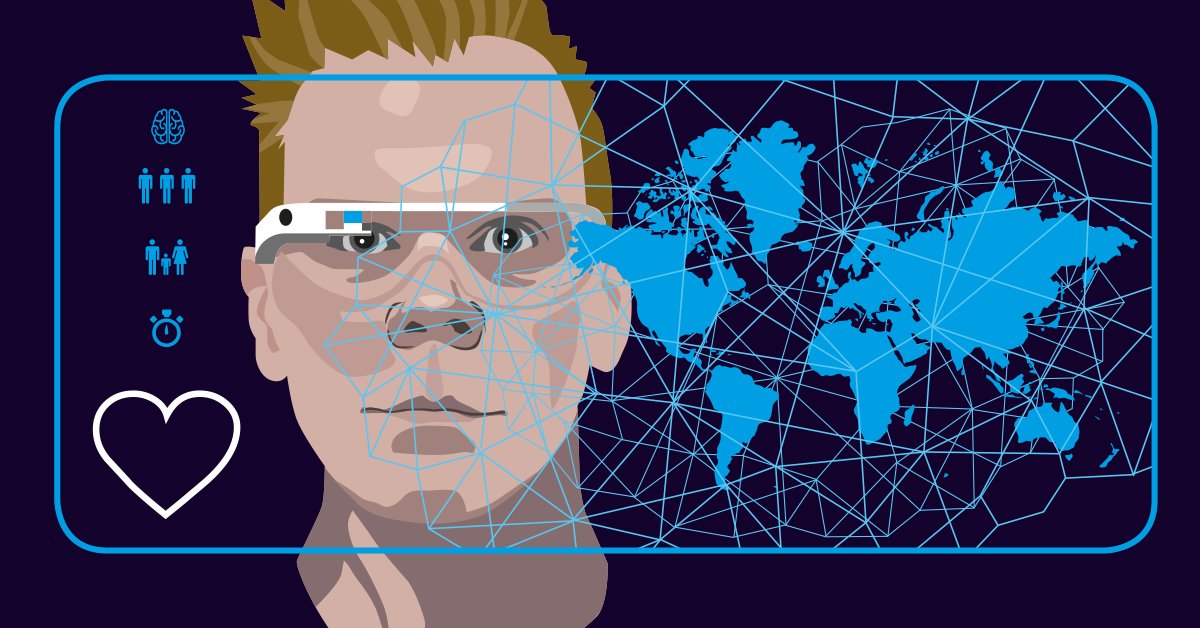In 2018 it's important to be mindful that the person you ask to marry you will be the same one you watch stare at their phones for the rest of your lives together! I mention this as I just got married last week in Walt Disney World and I write this blog while my husband is at the pool on our honeymoon!
Seriously, it's easy to make jokes about technology and love, no matter where you look, people have fallen in love with the people INSIDE their technology.
Modern Love
All of our family relationships, love interests, and peers have a piece of glass mediating their interactions with the people around them.
Few academics, journalists, and researchers are looking at how we fall in love with omnipresent technology and ubiquitous connectivity. Stories online tend to focus on how technology is contributing to depression, isolation and creating an introverted class of people who lack social skills.
Where are the stories of love, hope, faith, devotion, honor, and cherishing? Where are the digital equivalents of the box full of letters our grandparents sent to each other? Is there an online version of a great oak tree with lover’s initials carved in the side of the grainy wood stretching to the heavens?
Fortunately, and much to the dismay of many technology journalists, love is alive in the age of distraction, and while the stories aren't as clickbait filled as stories of isolation, digital love is real, and you can find it everywhere, if you look.
Shame and Digital Technology
As we approach 2020, many people still struggle to admit they met online, despite the fact we’re 30 years into the digital revolution and we no longer have a choice.
Yes, it's true, you can "go out" and meet someone, but ask anyone who is single, it's not like there’s a special bar or venue where you can go anymore. Being "out" is no different than being online. Bars are filled with men and women ordering drinks while surfing Tinder, Bumble, and Grindr anyway.
 Meeting, dating and falling in love is hard, and that's part of the problem with today's digital love. We are trying to fit a complicated process into the same micro-interactions that our spotty 4G coverage supports. Our hearts need more than a good filter and some emoji.
Meeting, dating and falling in love is hard, and that's part of the problem with today's digital love. We are trying to fit a complicated process into the same micro-interactions that our spotty 4G coverage supports. Our hearts need more than a good filter and some emoji.
On the other end of the spectrum are the challenges of technology during difficult times in a relationship. Software companies give us blunt instruments to manage affairs of the heart gone wrong. Heck, even Facebook has tools for couples in troubled times so you can "take a break", with the remarkably dark option to remove an old lover from your daily memories via a control panel for your past.
Despite the shame and software challenges, we still find that love is continuing to thrive in the age of Bumble, Grindr, and Tinder. Because love can't be contained, limited or shrunk; love is the original computer virus.
/INSTALL LOVE.EXE
Many of us have experienced all or part of the new rituals of digital love. The process of connected intimacy starts with dating. The apps that make up the dating world all come at it from different points of view. Apps like Bumble put women in the driver's seat. In the LGBT community, apps like Grindr allow you to see how many feet someone is away from you at any time. The ever-popular Tinder has a VIP option and a gold option that gives access to pools of people who are unavailable to users in the free application!
After spending days, or maybe a week, exchanging personal information, we move from the dating app to the next step. Suddenly we are exchanging phone numbers and possibly "real names." Gone is the safety of our dating app.
From the first text message new information is available to us. Is our potential partner an Android user, do they allow read receipts, do they frequently respond in short responses or long paragraphs? Do we go so far as to google their phone number? If we have a "real name", do we race to Facebook or LinkedIn to learn as much about them as possible?
Slowly as texting moves to phone calls, photos and then the IRL (In Real Life) dating event. These dates and communications lead us to the next significant digital love step: Adding our potential love interest into our address book as a "real" contact.
If we survive early digital courtship, post app, texting and IRL intimacy, we finally arrive at the big step of connecting at a more profound digital level, social media. It's time to move beyond the casual social media surveillance and buckle down and get serious in our relationship; it's time to "friend," "follow" or "connect" to our potential love interest.
Beyond the first kiss, I find that "friending" our potential love interests is the single most terrifying thing we do in early relationships. Within moments of that connection, a lifetime of memories and moments becomes open to us. Once our love interest accepts us as "friends" on a social network, we can access a library of emotions and history.
Going Beyond Like
Eventually there comes that moment where we navigate the middle ground of digital courtship. We go from being friends to the king of all status updates "In a relationship."
This "life event" proudly gaining more likes, loves (and snares) from our friends and family than the cheesecake snapshot from our vacation lunch. In one status update we are digitally joined.The rituals of becoming digitally exclusive commences. First, uninstalling any dating apps on our phones, next, possibly blocking our old lovers and finally, asking our friends to go easy on us when replying to posts!
Weeks become months, our social feeds start filling with vacations, our partners start tagging us in comments, and we slowly grow intertwined, all the while we are aware that someday, all these beautiful memories may come back to haunt us.
Digitally Shacking Up
As our relationship transitions into sharing multi-media credentials, services like Spotify, Netflix, and Hulu become confused at our new tastes in movies and music. Logging in to binge watch our favorite shows now is a reminder that someone else is using our credentials as new shows are offered to us by the algorithms. Suggested music takes on a unique flavor as playlists are crafted for us, that only serve to reinforce our newly intertwined digital lives.

Within months a mesh network of services, apps, and algorithms start mixing our lives like a vat of cybernetic emotions. Our journey of connected love is still just beginning. Soon we are sharing digital house keys and access to apps for the lights, thermostat and even entire sets of preferences as we give our beloved access to the environmental controls in our apartments and homes.
Somewhere deep in the cohabitation phase, we hit the last milestone of connected love. The final boss of the digital courtship game biometric, passcode and even location sharing.
Couples that reach this stage where phones and location are always accessible have developed a level of trust that is unparalleled in the physical world.
As months turn into years and engagements become weddings new sets of sites and services take over. Theknot.com handles our announcements, events, and plans for the blessed day. Amazon and Target taking over our gift registries.
Within months of getting married apps to measure and optimize fertility are installed alongside shared credentials to financial apps like Mint and our logins now welcome us with two names at the top of the websites.
The possibility of our new addition brings us to finding out if our child-to-be has a domain name available. Baby name searches and popularity replace late-night Netflix-and-chill.
404 LOVE NOT FOUND
With our entire lives linked and merged on the web, our logins become family accounts and the time to scroll through our best friends Facebook feed gets replaced with answering work emails and planning the next break away from the busy life on the internet.
 Years move on and slowly we find it more difficult to "like" our spouses' posts, we rarely even look at their photos and the hours of carefully crafted playlists become momentary listens as we find the perfect mix to crank out that next blog for work.
Years move on and slowly we find it more difficult to "like" our spouses' posts, we rarely even look at their photos and the hours of carefully crafted playlists become momentary listens as we find the perfect mix to crank out that next blog for work.
What happened to the magic of our digital love and how do we keep connected love alive now that everything is so accessible and combined?
PING 192.168.1.1, KEEPING LOVE ALIVE
In network technology 192.168.1.1 is the default IP address of many routers. This address is how professional troubleshooting starts. Can we ping this IP address? If we can send a request we receive a response, then the router is up, and the problem is someplace else on the network.
Digital love troubleshooting is like network troubleshooting in that way. You need to isolate the connection bottleneck or point of failure and work around it.
To keep digital love alive, I have found three sure-fire ways to get things moving when emotional downloads start slowing down!
1. Emotions 2.0
2. Social Media Spelunking
3. Digital Lunchbox Notes
Emotions 2.0
One of the challenges with digital love is the constrained nature of our emotional feedback loops. There isn't a lot of ways to express yourself when you are limited to either "Like" or a text message.
With a single upgrade, Facebook turned on five new feelings by the end of 2015! Today we enjoy new options beyond "Like" - options for "Love", "Laugh", "Wow", "Sad" and "Angry". 2015 was also the year that Apple introduced a technology called "digital touch". With digital touch, we could send drawings, taps and even heartbeats to the wrists and phones of our partners. Instantly transmitting small haptic, touches that vibrated on their arms!

Today, our social feeds are filled with emoji, Gifs and even emotional hypertext. Just typing “congrats” or “love” creates screens filled with hearts or fireworks. These upgrades to our digital emotions are important reminders of how we can use technology as an early adopter to score some emotional brownie points.
Embrace advances in the interfaces that are extending our emotional lives and show the people we love how much we care for them. There is no "right" way to use your digital repartee of emotions. Don't let all the possibilities scare you; there are no rules when it comes to expanding our love online. Be creative, passionate and brave.
Social Media Spelunking
Needing to rekindle that digital pilot light? Want to kick that new relationship into high gear? Our newly intertwined digital histories offer a wealth of opportunity to send a message of love and support.
Social media can sometimes be too publicwhen emotions are raw or fresh, and a text message lacks the intimacy and tenderness required at these times.
What if there were a way to indirectly send your partner support, something that says many things, yet is simple enough to remind you both what you value, treasure and hold in high regard? Enter, social media spelunking...
The idea behind social media spelunking is to dive deep into the social media history of our loved ones, to unearth messages of support!
The idea and practice came to me years ago when a stranger "liked" a post on Instagram I had forgotten about. In the post, I was on vacation with a friend somewhere in Russia. Within moments of receiving the notification, I was taken back to that trip.
We are so used to getting a notification for recent events or the more chronologically ordered events like Facebook's "On this day," yet there is no "random" memory feature, something that relationships really thrive on!
To use social media spelunking, start by accessing your partner's social media profile. Next go far into the past, maybe to some of the earliest posts you both have together. Find a moment, photo or update that you both had in common that has significant meaning.
Now, with little fanfare, like the post. Don’t take time to comment or share it, just with gentle attention, like the post. Within a few moments, your better half will receive notification about you from your post.
Without any warning, they will be indirectly transported back to a simpler time, and for a moment they can feel your support and commitment.
Digital Lunchbox Notes
Remember when your mom, girlfriend, boyfriend or partner would slip notes into your lunch or a card into your suitcase before a trip? That feeling of hitting the middle of your day, being completely wiped out, stressed out or at the end of your rope?
Then without any warning, boom, the note, card or photo, laying there at the bottom of your lunchbox, suitcase or briefcase. Words of affirmation and support looking back at you. Suddenly everything is ok, the world is right and you are not alone.
The idea of digital lunchbox notes is another powerful way we can use technology to connect and love. One of my favorite ways of doing this involves using location reminders, and it works like this.
 Before your spouse leaves for work, or that next business trip, grab their phone and create a reminder, except don’t create a reminder for a time, create a reminder for a place. I use the default places in Android and Apple phones, like “Arriving home” “Leaving home” “Arriving at work” “Leaving work” or sometimes I use exact addresses of places.
Before your spouse leaves for work, or that next business trip, grab their phone and create a reminder, except don’t create a reminder for a time, create a reminder for a place. I use the default places in Android and Apple phones, like “Arriving home” “Leaving home” “Arriving at work” “Leaving work” or sometimes I use exact addresses of places.
Next, I place messages in those locations as the reminder text. For example, “When arriving home” with a reminder that says, "You are home and loved." Or entering the address of the hotel your partner is staying at with the text of "While we are apart, I'll be thinking of you!"
These location-based reminders work on any smartphone and can even be augmented with social media location-based apps like Foursquare or Swarm. Instead of leaving a business review, why not start a discussion of how you and your partner first discovered a particular place. Next time your better half is at the location, the app will display your story and the uniqueness of your love will be there for the world to see! Think of it as the digital equivalent of leaving your initials carved in a tree.
There are other ways we can send these digital lunchbox notes... Using devices like Amazon's smart speaker Alexa, we can set up reminders for when we are away or out of the house. The AI can be programed to let your family know how much you love them or miss them on specific days or times!
There is no limit to the places you can find and delight the loved ones in your life with all the technology surrounding us! We have the ability to create an intranet of hope and love if we just take the time to look for ways to connect through the technology!
I’m going to recharge my husband’s Fitbit and clean the screen on his phone now, then jump into some deep Netflix-and-chill! See you next time, for the final installment of this blog series: Connected Minds.
 Published by
Published by 












